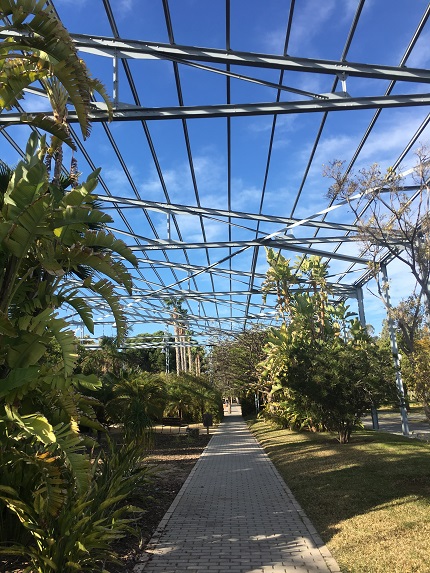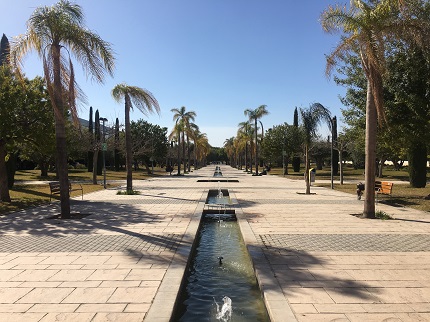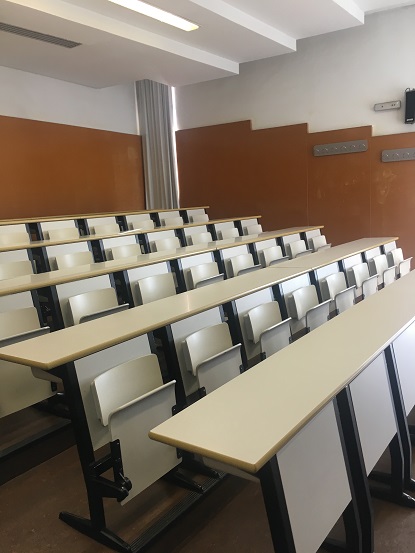 Now that I’ve had two weeks of classes, I feel like I’ve passed the “syllabus” week. With my CEA study abroad program in the Liberal Arts and Business School, I take three classes in English and 1 Spanish language class. Since I’m a Marketing major, I am taking three (equivalent to Colorado State University’s) marketing elective courses: Marketing Research, Strategic Marketing, and Organizational Design. My Spanish course is Intermediate Spanish, labelled as level A2.
Now that I’ve had two weeks of classes, I feel like I’ve passed the “syllabus” week. With my CEA study abroad program in the Liberal Arts and Business School, I take three classes in English and 1 Spanish language class. Since I’m a Marketing major, I am taking three (equivalent to Colorado State University’s) marketing elective courses: Marketing Research, Strategic Marketing, and Organizational Design. My Spanish course is Intermediate Spanish, labelled as level A2.
Scheduling:
Before leaving to study abroad…GET A LOT OF COURSES APPROVED! There is only one of each course taught in English, so you may need to change a few classes in order to get the right schedule for you. Once I got to the University, I met with my Program Director to finalize my registration! He helped me figure out what time tables work best for me, especially if a class may need to overlap. The final registration doesn’t end until two weeks after class, so you have time to try different classes and schedules!
Time and Place:
Luckily, my schedule allows me to have classes until 1 p.m. or 3 p.m. each day, with a nice long weekend (having Fridays off). I have each class twice a week for two hours, but most of the time we get dismissed early. Because my classes start at 9 a.m., I try to take the TRAM up to the University of Alicante at 8:08 a.m. This allows just enough time for me to hop off the train, take my scenic walk through campus, and get my vending machine coffee for 45 cents. The classrooms are surprisingly nice, with projectors in some but also older with chalkboards in others.
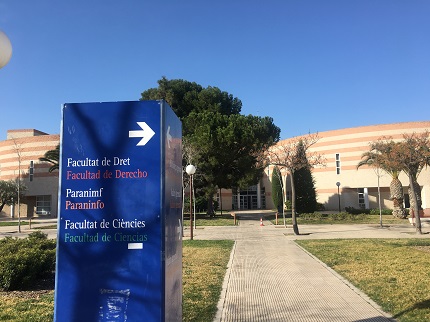 The Professors:
The Professors:
All of my professors are SO engaging and care so much about their students. They are very accepting of different languages and make sure we are all attentive. That being said, yawning, stretching, lying down, and eating in class is considered rude, so pay attention in class! They are very passionate about what they do, and I can tell they try harder because the classes are taught in English. English wasn’t any of their first languages, but I’m impressed by their fluency in English.
Learning:
The teaching style is mostly lecturing with small activities on certain days. There are set lecturing days, where we learn the material, and set practical days, where we work through problems and case studies as a class. Each of my professors play “Kahoot” in class, which is a learning competition on multiple choice questions; it’s actually very fun and it helps us review each unit. One of my favorite parts of classes in Alicante is the various foreign origins of the students. In my group projects, my group consists of people from Germany, Sweden, Spain, the USA, and the Netherlands! Who would’ve thought I would make friends all across the globe?
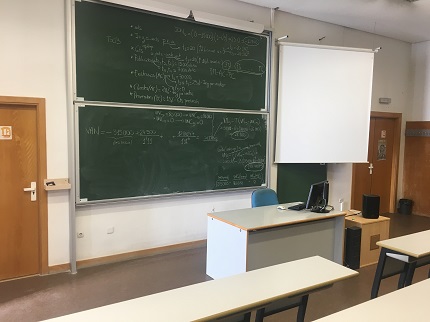
Spanish Class:
Although I studied Spanish for three years in high school, most of my grammar and vocabulary skills haven’t been used in at least two years. Because A1 level is elementary Spanish, I tested into A2 “Intermediate.” In class, we have workbooks that include activities like filling in the blank, working with partners, listening to tapes, etc. My teacher only speaks Spanish in class, but she tries to speak slowly and clearly so we can understand her.
Adjusting:
Adjusting wasn’t too hard because there aren’t too many differences between classes in the USA versus here in Spain. One of the main differences is that they only do multiple-choice tests here, and every point guessed wrong deducts from your grade; this makes test taking harder because you can’t just guess the right answer if you don’t know. Because my program ends before “finals week,” my teachers are very flexible in letting me take the final early here or I can have my final proctored in the USA.
